
In this comprehensive guide, we’ll explore the astronomical significance of the Autumn Equinox, delve into ancient Pagan traditions that honor this time, and discover how modern celebrations continue to find meaning in this celestial event. Whether you’re curious about historical practices or seeking ways to mark this seasonal milestone in your own life, join us as we uncover the rich tapestry of equinox traditions.
The Astronomical Significance of the Autumn Equinox
The Autumn Equinox, also called the September Equinox or Fall Equinox, occurs when the Sun crosses the celestial equator going from north to south. This astronomical event marks the beginning of autumn in the Northern Hemisphere and spring in the Southern Hemisphere.
When is the Autumn Equinox in 2025?
The Autumn Equinox in 2025 will take place on Monday, September 22 at 14:19 UTC (Coordinated Universal Time).
Here are the local times in key regions:
-
Eastern Daylight Time (EDT): 10:19 AM
-
Pacific Daylight Time (PDT): 7:19 AM
-
British Summer Time (BST): 3:19 PM
-
Australian Eastern Standard Time (AEST): 12:19 AM on September 23
This astronomical event marks the moment when day and night are nearly equal in length, as the Sun crosses the celestial equator heading south.
What Happens During the Equinox?
During the equinox, several notable astronomical events occur:
- The Sun rises exactly due east and sets exactly due west
- Day and night are approximately equal in length (though not exactly, due to atmospheric refraction)
- The Sun is directly above the equator
- After this date, nights become longer than days in the Northern Hemisphere
The word “equinox” comes from Latin aequus (equal) and nox (night), reflecting the roughly equal hours of daylight and darkness experienced worldwide on this day. This balance of light and dark has inspired countless cultural and spiritual traditions throughout human history.
Ancient Pagan Traditions & Symbolism
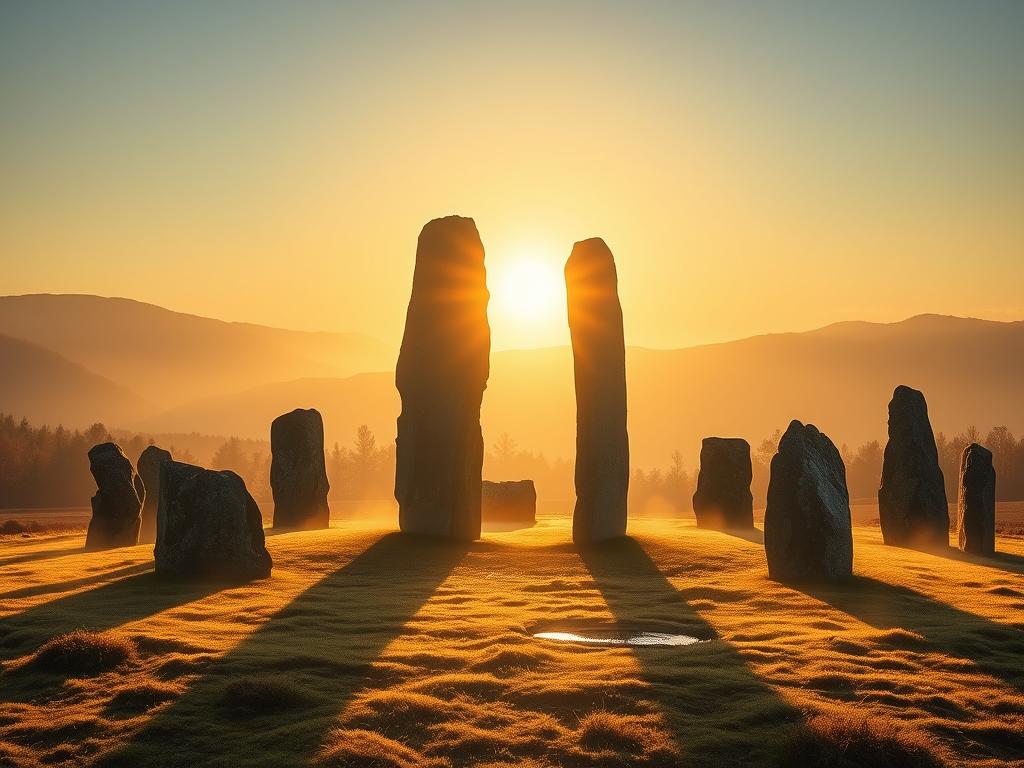
For ancient Pagan cultures, the Autumn Equinox represented a crucial time of transition. As agricultural societies, their survival depended on understanding seasonal cycles and preparing for the coming winter. The equinox became a time for celebration, gratitude, and spiritual significance.
Mabon: The Pagan Harvest Festival
In modern Pagan and Wiccan traditions, the Autumn Equinox is often celebrated as Mabon, named after a figure from Welsh mythology. While this specific name is a relatively modern addition to the Wheel of the Year, the harvest celebrations it represents have ancient roots.
Mabon is considered the second of three harvest festivals, falling between Lammas/Lughnasadh (August 1) and Samhain (October 31). It’s a time to:
- Express gratitude for the abundance of the harvest
- Prepare for the coming winter months
- Honor the balance between light and darkness
- Reflect on personal growth and achievements
Deity Associations
Various deities across cultures have been associated with the Autumn Equinox:
Harvest Deities
- Demeter (Greek) – Goddess of grain and the harvest
- Ceres (Roman) – Goddess of agriculture
- Freyr (Norse) – God of fertility and harvest
Balance & Transition Deities
- Persephone (Greek) – Transitioning to the underworld
- Pomona (Roman) – Goddess of fruit trees and orchards
- Mabon ap Modron (Welsh) – Divine youth
Symbolic Meanings
The Autumn Equinox carries rich symbolism that resonates across cultures:
- Balance – Equal day and night symbolize harmony and equilibrium
- Gratitude – Appreciation for the year’s bounty and achievements
- Preparation – Readying for the darker, colder months ahead
- Letting Go – Releasing what no longer serves, like trees shedding leaves
- Transformation – Embracing change and life’s natural cycles
Ancient Equinox Celebrations Around the World
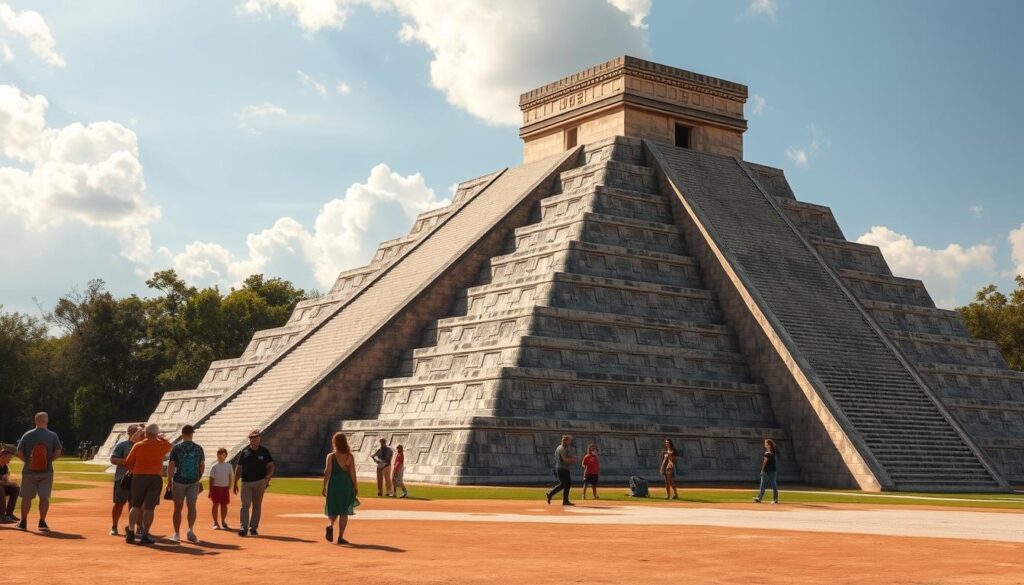
Across the ancient world, cultures developed sophisticated monuments and traditions to mark the equinoxes. These celebrations reflected their understanding of astronomy and its importance to agriculture and spiritual life.
Monumental Alignments
Many ancient structures were precisely aligned to mark the equinoxes:
- Machu Picchu (Peru) – The Intihuatana stone (“Hitching Post of the Sun”) casts no shadow during the equinoxes
- Chichén Itzá (Mexico) – The pyramid creates a serpent-like shadow that appears to crawl down the steps during the equinoxes
- Stonehenge (England) – Aligned to frame the equinox sunrise when viewed from the center
- Angkor Wat (Cambodia) – Designed so the sun rises directly over the central tower during the equinox
Cultural Traditions
Beyond monuments, various cultures developed rich traditions to mark this seasonal transition:
Eastern Traditions
- China – The Mid-Autumn Festival celebrates harvest and family reunions
- Japan – Higan is a Buddhist observance honoring ancestors
- Korea – Chuseok celebrates harvest with ancestral rituals and feasting
Western Traditions
- Celtic – Harvest celebrations with feasting and bonfires
- Greek – The Eleusinian Mysteries connected to Persephone’s descent
- Roman – Offerings to Pomona, goddess of fruit and abundance
The Harvest Moon and Its Connection to Fall
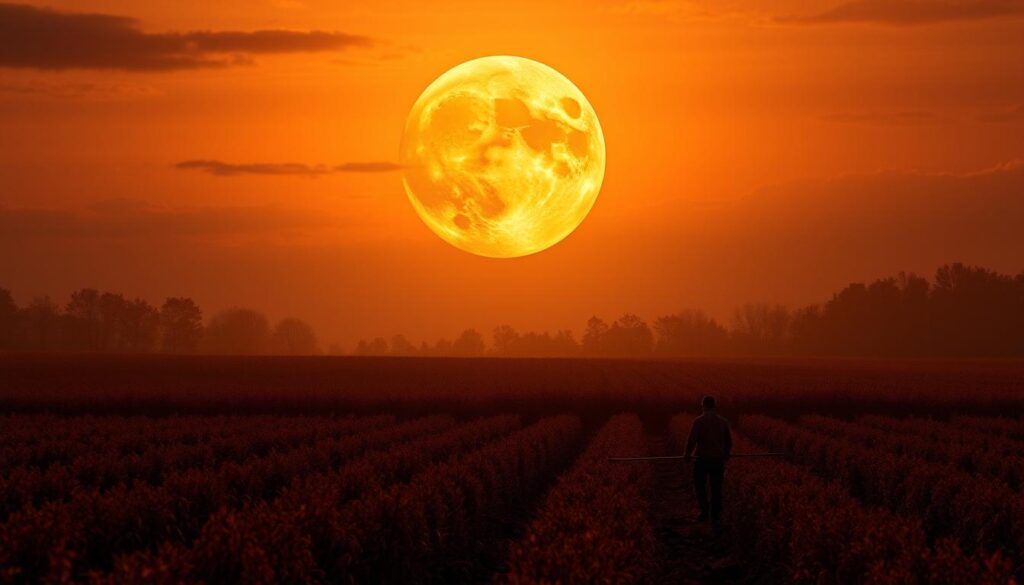
One of the most celebrated astronomical events connected to the Autumn Equinox is the Harvest Moon – the full moon that occurs closest to the September equinox. This special moon has played a vital role in agricultural communities for centuries.
Why Is It Called the Harvest Moon?
The name “Harvest Moon” has practical origins. Around the time of the autumn equinox, the moon rises only about 30-40 minutes later each night for several consecutive evenings, rather than the usual 50+ minutes. This phenomenon occurs because of the shallow angle of the moon’s orbit relative to the horizon during this season.
For farmers throughout history, this meant:
- Extra evening light to continue harvesting after sunset
- Several consecutive nights of bright moonlight
- Critical additional time to bring in crops before frost
Cultural Significance
The Harvest Moon has inspired traditions, folklore, and celebrations across cultures:
- Traditional harvest festivals often coincided with this full moon
- Many cultures saw it as a time of abundance and gratitude
- The unusually bright and low-hanging appearance of this moon inspired art, music, and poetry
- In some traditions, it was believed to be a powerful time for divination and spiritual work
“Shine on, shine on harvest moon up in the sky; I ain’t had no lovin’ since January, February, June or July.”
Modern Interpretations and Celebrations
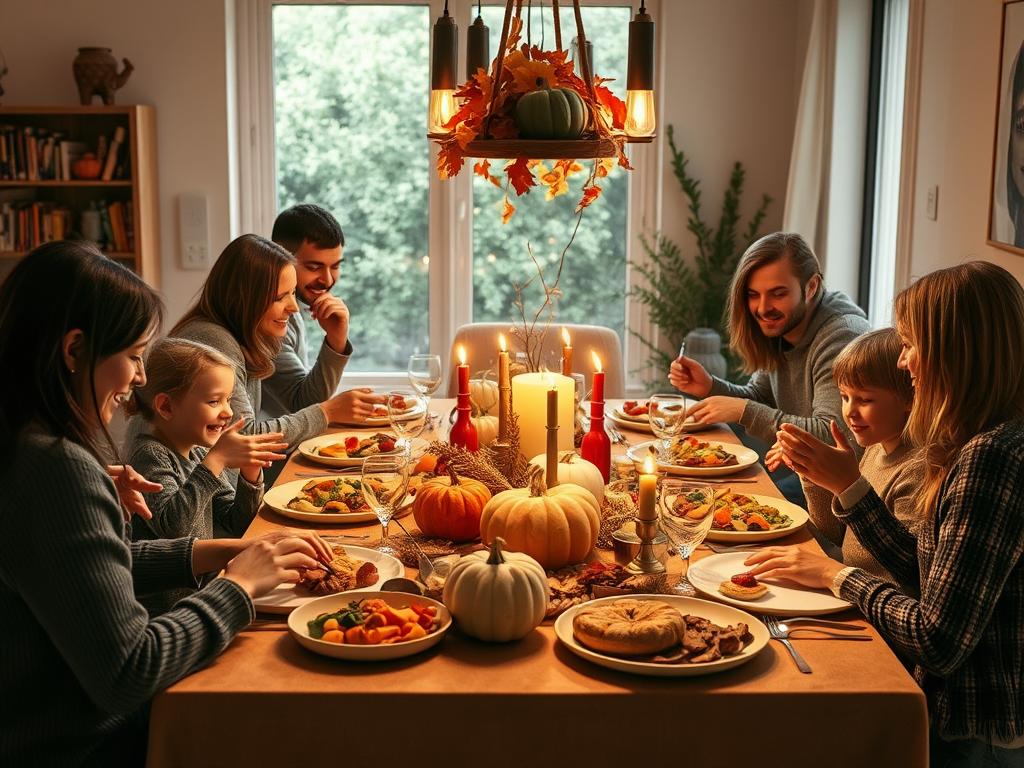
Today, people from diverse backgrounds find meaning in celebrating the Autumn Equinox. These modern interpretations blend ancient wisdom with contemporary values, creating accessible ways to honor seasonal transitions.
Secular Celebrations
Many non-religious individuals and families celebrate the equinox as a natural seasonal milestone:
- Harvest festivals and farmers’ markets
- Apple picking and orchard visits
- Nature walks to observe autumn changes
- Crafting with natural materials like leaves, acorns, and gourds
- Community potlucks featuring seasonal produce
Mindfulness Practices
The equinox offers a perfect opportunity for reflection and mindfulness:
- Journaling about personal growth and harvest
- Meditation on balance and transition
- Gratitude practices focusing on the year’s blessings
- Setting intentions for the coming season
- Creating personal rituals to mark the changing light
Seasonal Décor Trends
Modern homes often celebrate autumn with seasonal decorations:
Natural Elements
- Dried wheat and corn husks
- Colorful autumn leaves
- Pumpkins and gourds
- Pinecones and acorns
Symbolic Décor
- Balance-themed displays (scales, yin-yang)
- Harvest baskets and cornucopias
- Warm-colored candles
- Apple and cinnamon scents
Connection to Sustainability
Modern equinox celebrations often emphasize environmental awareness:
- Preserving and storing local seasonal produce
- Seed saving for next year’s garden
- Composting fallen leaves and garden waste
- Reducing energy use as days shorten
- Supporting local farmers and sustainable agriculture
Cultural Blending: Pagan Influences on Modern Holidays
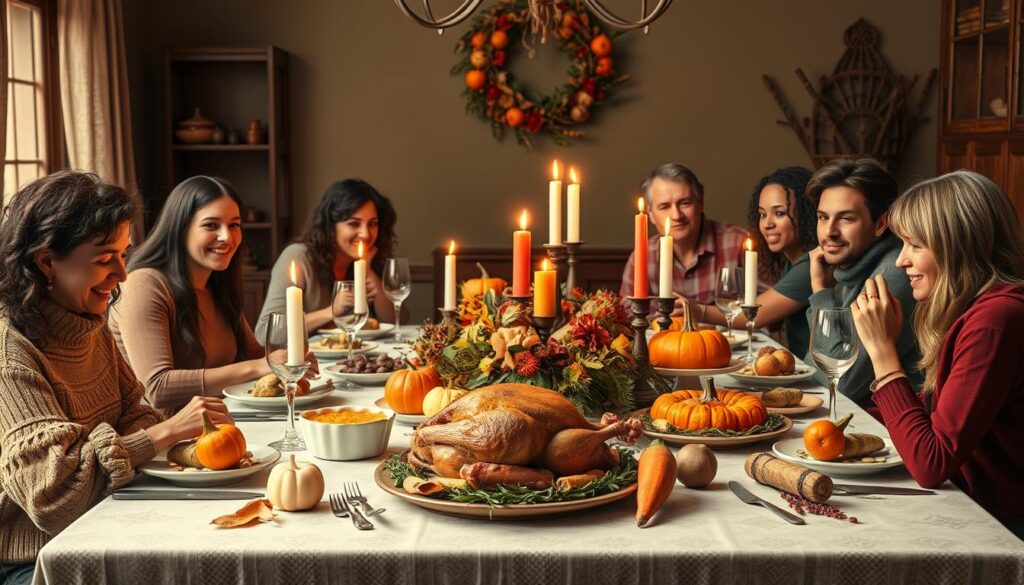
Many of today’s most beloved holidays and traditions have roots in ancient seasonal celebrations. The Autumn Equinox traditions, in particular, have influenced several modern observances.
Thanksgiving Connections
While Thanksgiving in North America commemorates specific historical events, its symbols and practices echo ancient harvest festivals:
- The cornucopia (horn of plenty) derives from Greek and Roman harvest symbolism
- Harvest foods (squash, corn, apples) were central to Pagan equinox celebrations
- The practice of giving thanks for abundance mirrors ancient harvest rituals
- Family gatherings reflect the communal nature of traditional harvest festivals
Halloween’s Harvest Roots
Halloween, while more directly connected to Samhain (October 31), carries forward some equinox themes:
- Pumpkin carving evolved from turnip carving in Celtic harvest traditions
- Harvest symbols like corn stalks and hay bales feature in decorations
- The theme of transition between seasons connects to equinox symbolism
Autumn Festivals Worldwide
Many cultures maintain harvest festivals that blend ancient practices with modern celebrations:
European Traditions
- Oktoberfest (Germany) – Originally a harvest celebration
- Harvest Home (UK) – Traditional harvest thanksgiving
- Wine Harvest Festivals (France, Italy) – Celebrating grape harvests
Global Celebrations
- Mid-Autumn Festival (East Asia) – Moon viewing and family reunions
- Sukkot (Jewish) – Harvest festival with historical significance
- Pongal (India) – Harvest thanksgiving festival
This blending of traditions demonstrates how ancient wisdom continues to inform our modern celebrations, connecting us to both our ancestors and the natural cycles that shape our world.
Creating Your Own Autumn Equinox Practice
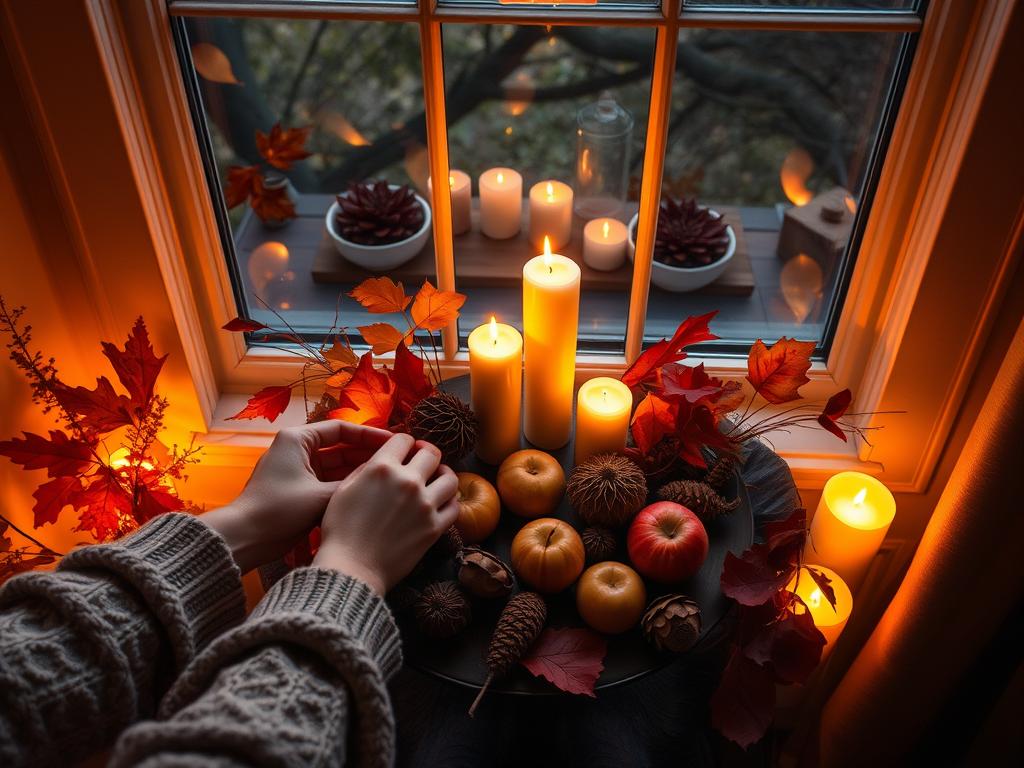
Whether you’re drawn to ancient traditions or prefer a more contemporary approach, creating your own meaningful Autumn Equinox practice can be a rewarding way to connect with nature’s cycles. Here are some accessible ideas for personal or family celebrations.
Simple Rituals
Create meaningful moments that honor the season:
- Light candles at sunset to acknowledge the increasing darkness
- Take a mindful walk to observe signs of autumn in your area
- Create a gratitude list for your personal “harvest” of the year
- Share a meal featuring local seasonal foods
- Plant spring bulbs as an act of faith in the returning light
Creative Expressions
Engage your creativity to mark the equinox:
- Craft a wreath or centerpiece with autumn materials
- Journal about balance in your life and areas needing attention
- Create nature mandalas with fallen leaves, seeds, and stones
- Bake bread in shapes that symbolize the harvest
- Compose music or poetry inspired by the changing season
Family Activities
Include children in age-appropriate celebrations:
- Apple picking or visiting a pumpkin patch
- Creating leaf rubbings or autumn-themed art
- Reading stories about autumn changes and harvest
- Making bird feeders to help wildlife prepare for winter
- Building a nature table that can evolve throughout the season
Remember: The most meaningful practices are those that resonate with your personal values and circumstances. Feel free to adapt traditions or create entirely new ones that speak to your unique connection with the season.
Embracing the Wisdom of the Equinox
As we’ve explored, the Autumn Equinox represents far more than an astronomical event. It embodies universal themes of balance, gratitude, and transition that resonate across cultures and throughout time. From ancient stone circles to modern family celebrations, humans have always found meaning in marking this pivotal moment in Earth’s journey around the sun.
Whether you connect with the Pagan traditions of Mabon, appreciate the astronomical precision of ancient monuments, or simply enjoy the sensory pleasures of autumn, the equinox offers an opportunity to pause and align with nature’s rhythms. In our fast-paced modern world, these seasonal touchstones provide valuable moments to reflect, celebrate, and prepare for the changes ahead.
As the balance tips toward darkness in the Northern Hemisphere (or toward light in the Southern), may you find your own meaningful way to honor this ancient turning point and carry its wisdom into the season ahead.
References and Further Reading
- Blackburn, B. & Holford-Strevens, L. (2003). The Oxford Companion to the Year: An Exploration of Calendar Customs and Time-Reckoning. Oxford University Press.
- Cunningham, S. (2003). Wicca: A Guide for the Solitary Practitioner. Llewellyn Publications.
- Hutton, R. (1996). The Stations of the Sun: A History of the Ritual Year in Britain. Oxford University Press.
- Krupp, E.C. (1997). Skywatchers, Shamans, and Kings: Astronomy and the Archaeology of Power. Wiley.
- Starhawk. (1999). The Spiral Dance: A Rebirth of the Ancient Religion of the Great Goddess. HarperOne.
- Time and Date AS. (2024). September Equinox. Retrieved from https://www.timeanddate.com/calendar/autumnal-equinox.html
Disclaimer: This article is provided for informational and educational purposes only. The traditions, practices, and beliefs described represent diverse cultural and spiritual perspectives. The author respects all spiritual paths and does not advocate for any particular religious practice. Readers are encouraged to research further and make informed choices about their own seasonal observances.





